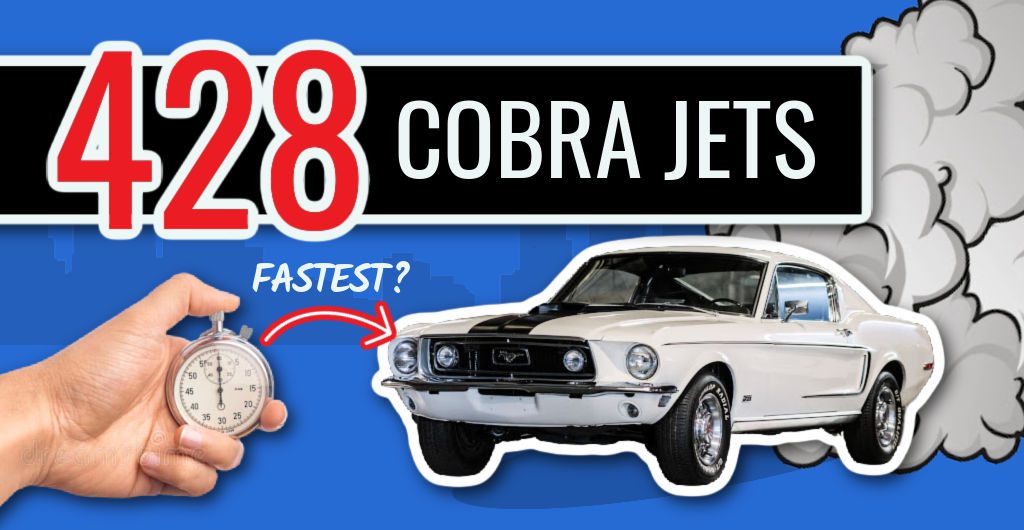
The 428 Cobra Jet engine powered over nine of the fastest Ford and Mercury Muscle Cars from 1968 to 1970.
However, Ford Engineers didn’t develop this impressive powerplant. Instead, “Tasca Ford,” the second-largest Ford dealership in the world in the 1960s, inspired the 428 CJ revolution.
If you want to discover which 428 Cobra Jet powered Fords were the fastest muscle cars, how the engine originated, which vehicles had it, and how the 428CJ differs from the 428SCJ, then read on.
Let’s look at the differences between a 428 Cobra Jet and the 428 Super Cobra Jet engine, shall we?
Table of Contents
What is a 428 Cobra Jet?
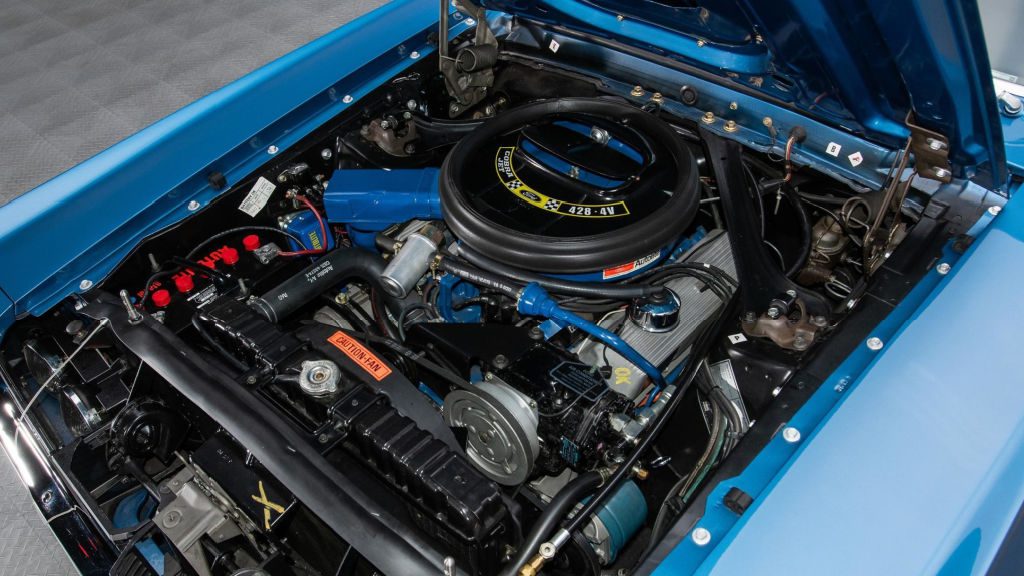
The Ford 428 Cobra Jet was the high-performance version of the 428 FE engine, quickly overtaking the low-revving 390 CID V-8 as the high-performance powerplant of choice.
Pioneered in 1967 as a stripped-down, drag-ready Mustang for Tasca Ford, the 428 short block with 427 heads christened the “KR-8” flawlessly balanced proven race engineering with factory Ford parts.
And this dealer-inspired Ford racing engine couldn’t have appeared at a better time for the Ford Motor Company.
The Camaro, Firebird, and Barracuda had eroded the pony car market Ford created in 1964. Consequently, Ford used this 428 engine as the inspiration it desperately needed to help reclaim its rightful place at the top of the pony car market. In April 1968, Ford released its own version of the 428 engine and called it the “Cobra Jet.”
To verify an original car, you can simply look at the vehicle identification number (VIN) on the dashboard. The fifth digit in the VIN on any Ford from 1968-1970 tells you whether or not a vehicle came with this engine or not.
Two codes designated a CJ: the “R” code specified a Ram Air vehicle, while the “Q” code meant no Ram Air.
1968 428 Cobra Jet Engine Specifications
| Bore | 4.13 in |
| Stroke | 3.98 in |
| Compression | 10.6:1 |
| Horsepower | 335 @ 5600 RPM |
| Torque | 445 lb-ft @ 3400 RPM |
1969-1970 428 Cobra Jet Engine Specs
| Bore | 4.13 in |
| Stroke | 3.98 in |
| Compression | 10.6:1 |
| Horsepower | 335 @ 5200 RPM |
| Torque | 440 lb-ft @ 3400 RPM |
The 428CJ was available in nine Ford, Mercury, and Shelby muscle car models between 1968-1970.
- 1968-1970 Ford Mustang
- 1968-1969 Ford Fairlane
- 1968-1969 Ford Torino
- 1969 Ford Cobra
- 1968-1970 Mercury Cougar
- 1968 Mercury Comet
- 1968-1969 Mercury Cyclone and CJ
- 1969 Mercury Montego
- 1968 Shelby GT500KR
What is a Super Cobra Jet?
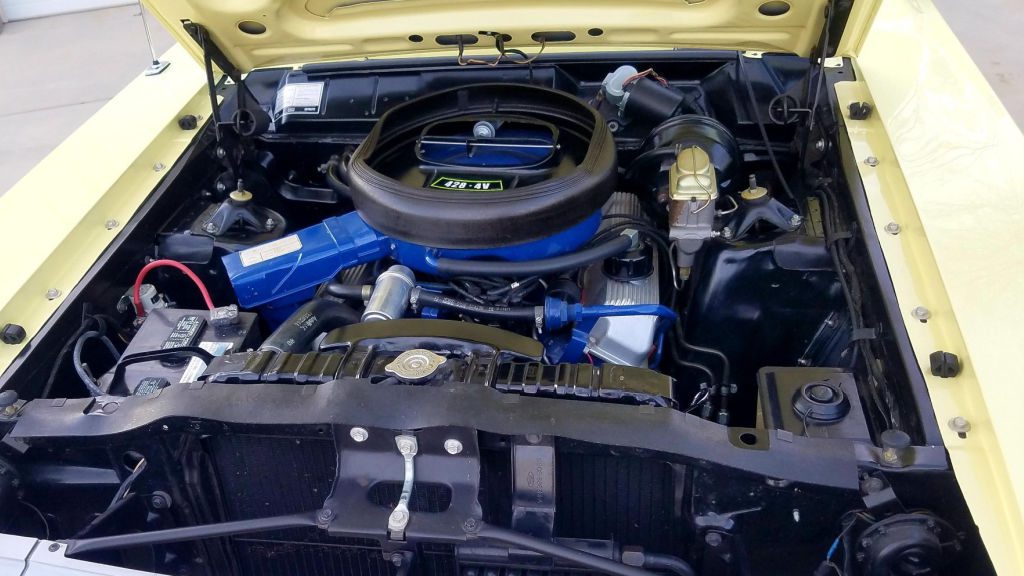
Introduced during the 1969 model year, the 428 Super Cobra Jet used the same block as the Cobra Jet. However, there were a few key internal differences between the two engines.
The 428SCJ used 427 LeMans connecting rods and different pistons, a crank, wrist pins flywheel/flexplate, a cast-iron Police Interceptor intake manifold, and an engine oil cooler.
Lastly, Ford engineers externally balanced the SCJ engine with a counterweight behind a different harmonic balancer because they removed the center counterweight on the crank.
While both shared the same advertised horsepower and torque figures, the 428SCJ didn’t have air conditioning due to the engine’s oil cooler location.
When identifying a Super Cobra Jet, you can’t do it by the VIN as it shares the same “R” and “Q” code designations as the Cobra Jet.
So, instead, you have to examine the axle code on the door tag for a “V” or a “W” to verify it’s legit. The V-code designated a 3.91:1 rear axle ratio, while the W-code meant a 4.30:1 rear axle ratio.
The Ford 428 Super Cobra Jet was only available in the 1969 and 1970 model years.
- 1969-1970 Ford Mustang
- 1969 Ford Fairlane
- 1969 Ford Torino
- 1969-1970 Mercury Cougar
- 1969 Mercury Cyclone and CJ
- 1969 Mercury Montego
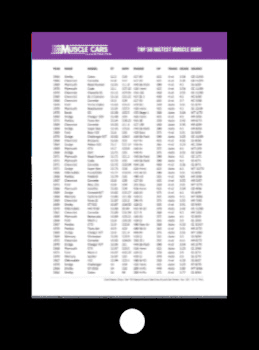
Get The Top 50 Fastest Muscle Cars chart. Includes year, model, engine, 1/4 mile times, and more—absolutely free!
How Fast Is a 428 Cobra Jet?
Automotive magazines from 1968-1969 recorded eight of the fastest Mustangs, Fairlanes, Cyclones, and Cougars powered by a 428 Cobra Jet and Super Cobra Jet, ranging from 13.23 to 14.40-seconds in the quarter-mile ET with trap speeds of 99.4-106.6 MPH.
Let’s check out the eight fastest Ford Muscle Cars powered by a 428CJ and 428SCJ, shall we?
8th Place: 1970 Ford Mustang Mach 1 428CJ
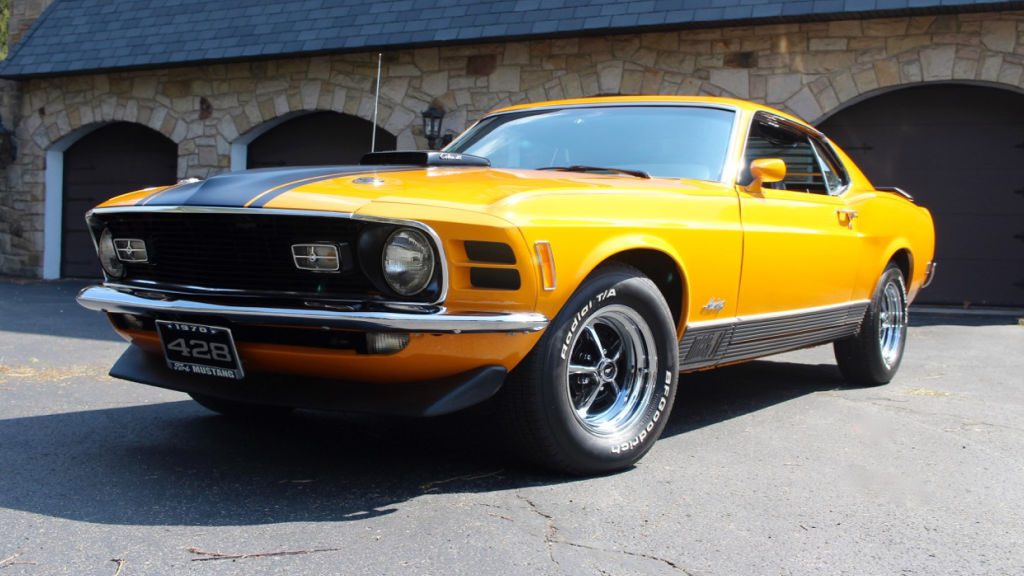
While the 1970 Ford Mustang Mach 1 came in eighth place on this list, it came in 21st place in the fastest muscle cars of 1970 rankings.
In the November 1969 issue of Super Stock and Drag Illustrated magazine, a ’70 Mach 1 made a 14.11-second quarter-mile pass, traveling 101.1 miles per hour.
Restyled in 1970, the Mustang returned to single headlights that moved inside of the grille. Additionally, Ford simplified several exterior styling features due to a sales dip in 1969 attributed to “aggressive” styling.
The 428 Cobra Jet returned, and all Mach 1s came standard with a rear sway bar. The Shaker Hood was now available on all V-8s, not just the CJs.
7th Place: 1969 Ford Cobra 428CJ
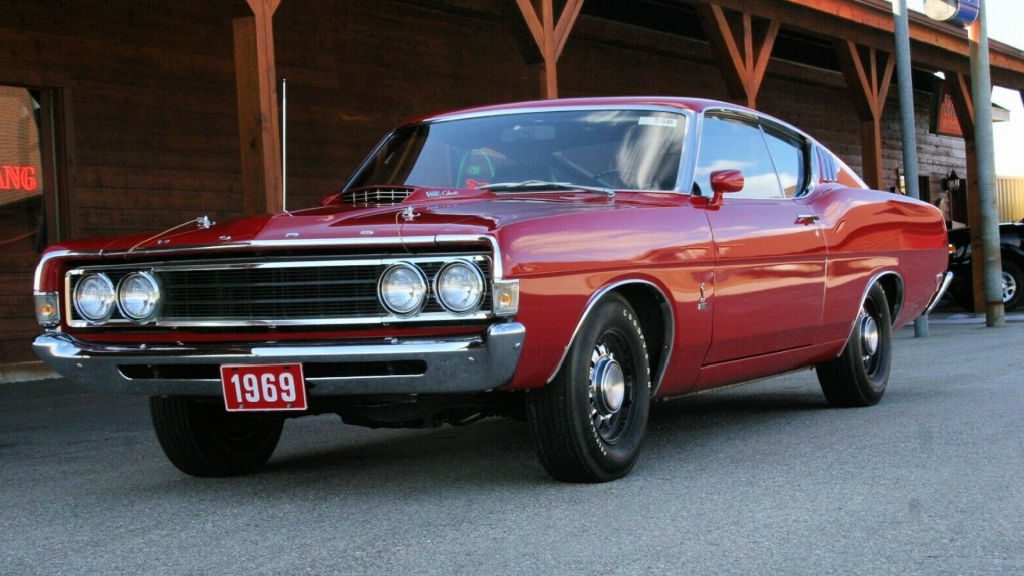
In seventh place is the 1969 Ford Fairlane Cobra.
In the 1969 Supercar Annual magazine, one ran a 13.94-second quarter-mile time, traveling 101.7 miles per hour.
The 1969 Ford Fairlane Cobra was a 1969-only option and was available in either a Formal Roof Hardtop or a Fastback form. It was powered exclusively by a 428 in either CJ or SCJ fashion.
1969 Cobras are often mistakingly called Torino Cobras, which didn’t appear until 1970. The Formal Roof versions were the ultimate sleeper, looking like your average everyday “grocery getter” to any unsuspecting contenders that pulled up next to it at a red light.
1969 Ford Cobras were dressed-down street warriors with a basic interior, column shifter, essential gauges, and gobs of power far more significant than the 335 horsepower advertised ratings. However, a 4-speed option was also available.
A limited number of Cobra emblems placed strategically on the exterior warned people what lurked under the hood. But, for many, it was far too inconspicuous for them to realize it before seeing its taillights.
6th Place: 1969 Mercury Cougar 428CJ
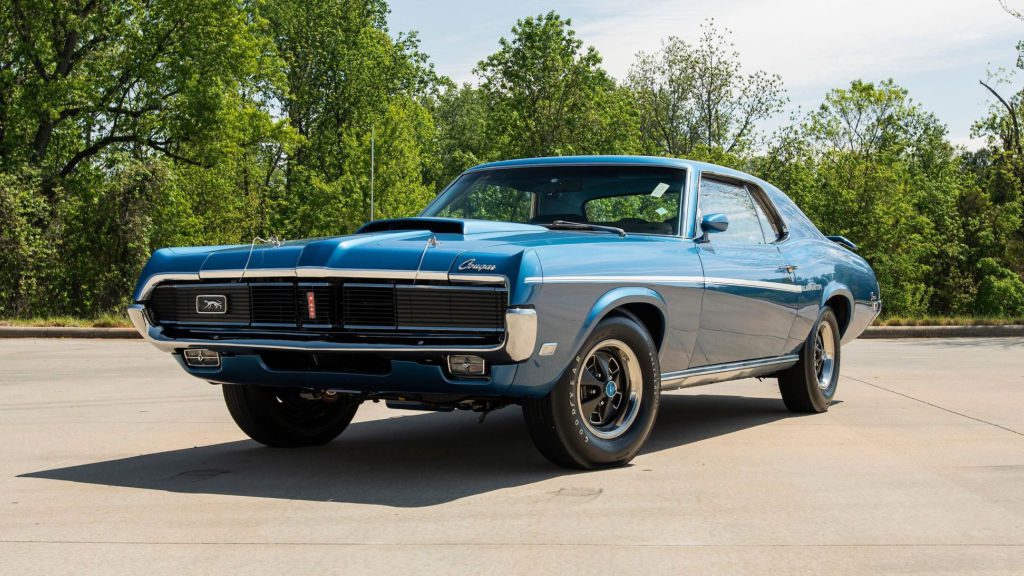
In sixth place is the 1969 Mercury Cougar Eliminator.
In the 1969 Supercar Annual magazine, a ’69 Cougar Eliminator ran a 13.90-second quarter-mile time with a 101.2 miles per hour trap speed.
The Mercury Cougar underwent styling updates in 1969, including transitioning to Coke bottle styling and eliminating side vent windows. It also saw the addition of a new convertible body style with a power top.
The front maintained a full-width grille with an updated horizontally slatted grille, and, in the rear, the Cougar now came equipped with taillight lenses that were concave instead of convex.
The Cougar was available in either standard or XR-7 trim, with option packages including the GT and the performance-trim Eliminator.
5th Place: 1969 Mercury Cyclone CJ
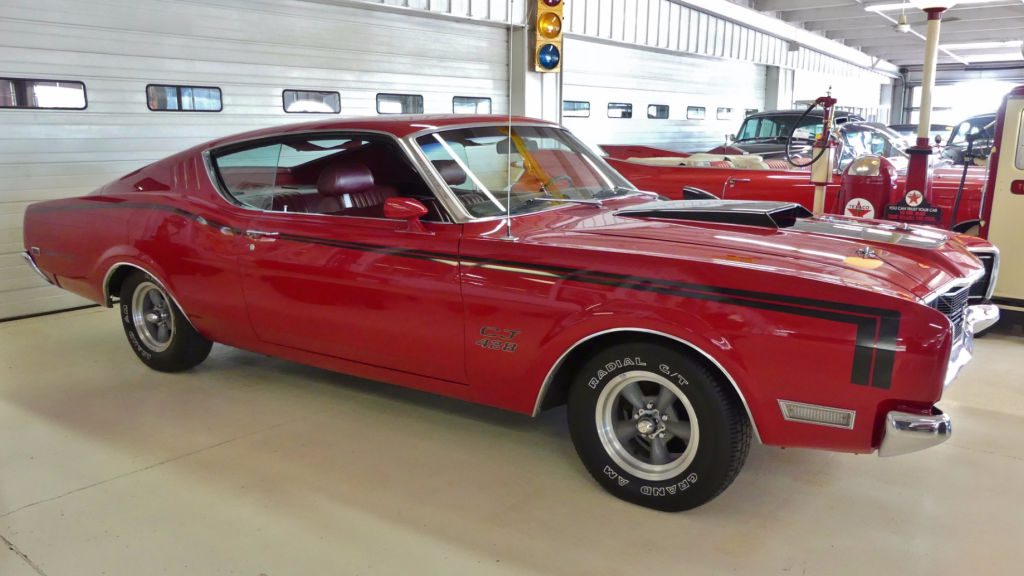
In fifth place is the 1969 Mercury Cyclone CJ.
In the January 1969 issue of Motor Trend magazine, a ’69 Cyclone CJ 428SCJ ran a 13.86-second quarter-mile pass at 101.7 miles per hour.
The 1969 Mercury Cyclone continued on the Montego platform in the fastback form, and the GT was no longer a model, available as an appearance-only package.
The CJ came in the GT’s place, powered by a 428CJ and a Spoiler variation that appeared midyear with a standard rear wing. In addition, the Spoiler II was available in either a red or blue paint scheme—honoring legendary NASCAR drivers Cale Yarborough and Dan Gurney, respectively.
The full-page print ad for the 1969 Mercury Cyclone CJ stated it best:
Cyclone CJ—the high-performance fastback with the bold build and sports car spirit. In the go department, a real grabber (335 horses). You can have it straight (CJ 428) or with optional CJ 428 Ram, the breathtaker. (The hood scoop works.) Cyclone CJ comes with four-speed stick competition handling package, wide-tread fiberglass belted WSW tires, blackout grille, hood stripe, all-vinyl cockpit, low-restriction dual pipes—all standard. Performance options aplenty: tach, styled steel wheels, power front disc brakes, power steering, Traction-Lok differential (3.50, 3.91 or 4.30 axel ratios), bucket seats, racing mirror—you name it. Say Cyclone CJ. You might as well lead the way.
While the print ad boasted leading the way, the Cyclone CJ ended up closer to the middle of the pack in 1969, coming in 12th overall in factory supercar quarter-mile times published that year.
4th Place: 1968 Mercury 428 Cyclone GT
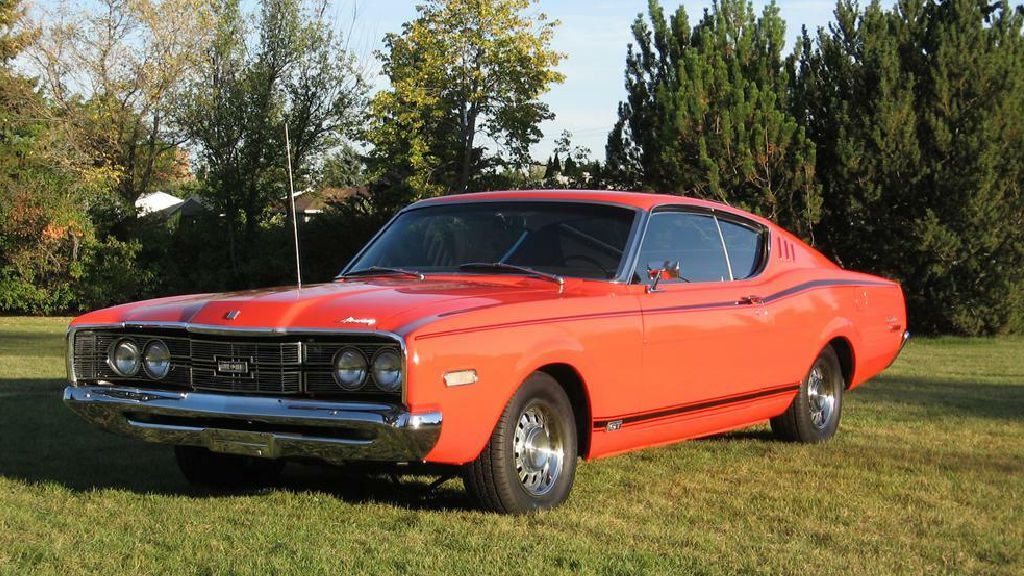
In fourth place is the 1968 Mercury 428 Cyclone GT.
In its August 1968 issue, Motor Trend Magazine reported a 13.86-second ET, traveling at 101.69 miles per hour.
Completely overhauled in 1968, the Mercury Cyclone underwent significant changes, including dropping the convertible and adding a fastback form.
1968 was when the Cyclone lost its affiliation with the Comet nameplate, a good move considering it was on its way out entirely by 1969. The Cyclone was now part of the Montego family of vehicles.
The CJ 428 engine was the top-of-the-line performance option that replaced the former performance heavy-weight 427 CID V-8 in April 1968. The Cobra Jet package added $287.60 to the sticker price of a Cyclone.
While the Cyclone was named the fastest car of the year, having set a world record speed of 189.22 miles per hour at Daytona, the 428 version wasn’t the fastest in the quarter-mile, achieving 18th place overall.
The 428 Cyclone tipped the scales at 3,740 pounds, which helped give it momentum on the oval track but held it back in the quarter-mile.
3rd Place: 1969 Ford Mustang Mach 1 428CJ
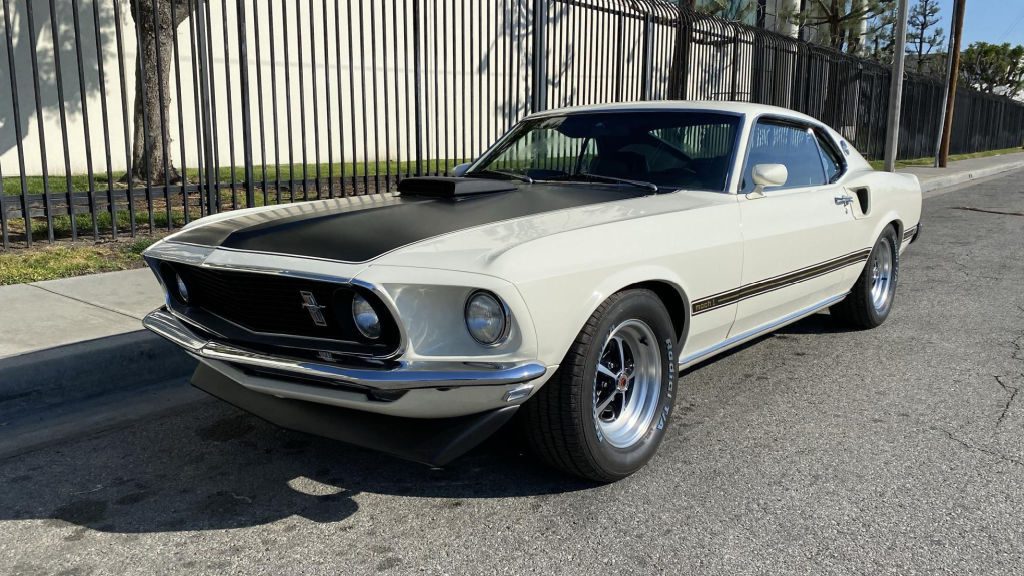
In third place is the 1969 Ford Mustang Mach 1.
In the January 1969 issue of Popular Hot Rodding, a ’69 Mach 1 CJ 428 ran a 13.69-second ET with a trap speed of 103.4 miles per hour—making it the tenth fastest muscle car of 1969.
Ford introduced the Mach 1 Mustang in 1969, creating an instant smash hit that outsold the previously popular GT by 67,062 units— shuttering the GT model at the end of the model year.
Every 1969 Mustang Mach 1 (72,458) came in the SportsRoof fastback body style, equipped with a V-8 engine ranging from a 351W 2V to the 428 CID Cobra Jet 4V with or without Ram Air.
428CJ /SCJ cars used shock tower reinforcements, thicker front sway bars, and beefier springs and shocks. In addition, when equipped with a 4-speed, the rear shocks were staggered.
2nd Place: 1968 Ford Mustang 428 Cobra Jet
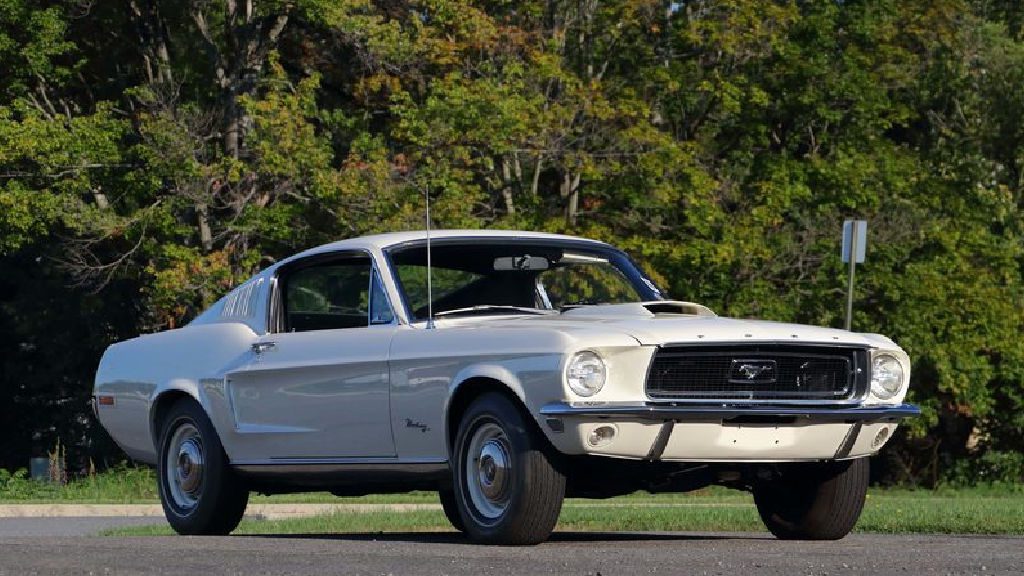
In second place is the 1968 Ford Mustang 428 Cobra Jet.
In the March 1968 issue of Hot Rod magazine, a ’68 Mustang CJ ran a 13.56-second quarter-mile time, traveling at 106.6 miles per hour.
The 1968 Mustang received several styling updates, including side scoops, steering wheel, side marker lights, and gas cap.
Ford wanted to develop a new high-performance engine to help compete against other newly introduced pony cars that had stolen market share. Luckily, Tasca Ford pioneered a high-revving 428 engine nicknamed the “KR-8” as a direct replacement for the low-revving 390 FE engine.
Ford quickly caught the vision, and before the drag-ready Mustang returned to Tasca Ford, Ford Engineers removed it from the vehicle so they could reverse engineer it for mass production.
In April 1968, Ford introduced the Cobra Jet, built from a 428 Police Interceptor short block with 427 “low riser” heads, among other heavier-duty performance parts.
Ford initially created 50 base Mustangs (20 of which were factory lightweights) equipped with a 428CJ dressed in Wimbleton White, then delivered them to select Ford dealers nationwide to help spread the word on its new venomous creation.
However, buyers would have to order the GT package if they wanted to get their hands on one in 1968—available in either a coupe or fastback body style.
1st Place: 1968 Mercury Cougar XR7-GT 428CJ
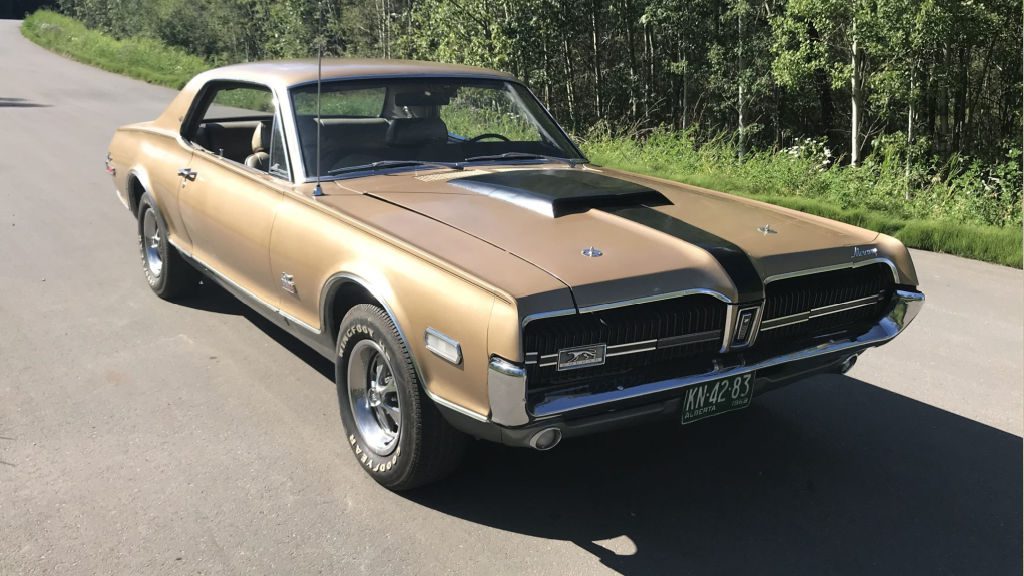
1968 was the year the wild Mustang—and all other Ford models—fell prey to the untamed Cougar.
In the August 1968 issue of Super Stock & Drag Illustrated magazine, a ’68 Cougar XR7-GT tripped the quarter-mile in 13.23 seconds, traveling at 103.4 miles per hour.
Not only is the 1968 Mercury Cougar XR7-GT the fastest factory Cobra Jet on this list, but it is also the fastest muscle car of 1968—much to the chagrin of Mustang, Torino, Fairlane, Cyclone, and Montego owners everywhere.
1968 was the only second year of the Cougar, which only received minor revisions, including side marker lights and front shoulder belts.
Conclusion
The 428 Cobra Jet was born by drag racers at a Ford Dealership to nudge FoMoCo in the right direction when they needed it most to help recapture the pony car market.
It was fortuitous that Tasca Ford nudged Ford—and Ford listened—because the 428 Cobra Jets and Super Cobra Jets are amongst the baddest Ford Muscle Cars you could drive off the lot from 1968-1970.
Take Our Poll!

Ryan Wheaton
Ryan has owned muscle cars since 1986 and currently owns a 1972 Dodge Charger Rallye. He combines passion and experience to create engaging content for fellow muscle car enthusiasts. In 2018, he founded Muscle Cars Illustrated, authoring hundreds of articles on tips, history, and trends in the muscle car industry. He attends national car shows, auctions, and museums to stay current with the latest developments in the muscle car industry.Comments
Comments are closed.


Given the tires – anything too much quicker than 13.6 kind of thing is (wet) dreaming. Great motor, great cars.
Great article, but the ’68 Cougar wasn’t offered as a convertible! That didn’t happen until ’69. They did have a few XR7-G Cougars built that came with the first factory retractable sunroof though! Untamed European elegance indeed.
I have 1968 galaxie fastback with a 428 4 speed
I won Winter Nationals at Beeline Dragway in DStock Class at 13:05 118 mph in 1970 with my 428 CJ Mach.
slicks or street tires ,auto or stick,gears?awesome…holy cow…
Grue up with Ford FE. Bought a new 69 Mach 1 and ran at the strip w best et 12.72. Sold it, big mistake.
Twenty three years later 1992 bought a 289 GT Coup but soon installed a FE with cylender head mods and solid roller cam have ran a best 1.33– 60 foot and a 6.39 eighth mile.